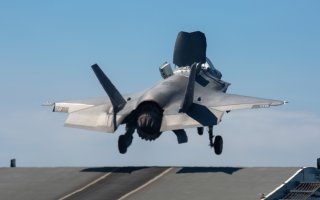Why the F-35 is Crucial to U.S. Air Supremacy
The reality often dismissed or simply buried beneath the ongoing debate is that there is a credible and interesting argument why continued procurement, sustainment, and modernization of the Lockheed Martin F-35 Lightning II stealth fighter jet could help establish U.S. air supremacy moving into the coming decades.
There may be hints that the Air Force is leaning in this direction given its ongoing future fighter force study which sees a prominent and growing role for F-35s and NGAD.
“The continued use of legacy aircraft has become costly to both fly and repair. Streamlining the current fighter fleet by transitioning to NGAD, F-35 Lightning II, F-15EX Strike Eagle, F-16 Fighting Falcon, and right-sizing the A-10 Thunderbolt II will ensure the capability, capacity and affordability required to meet the peer threat,” an Air Force report on the Fighter Roadmap writes.
When discussing elements of the Future Fighter Force plan, General Kelly warned, the U.S. force could first become irrelevant and then face what he called “kinetic defeat” against a superior enemy. The Roadmap is intended to build upon the often discussed Air Force shift from seven fighter platforms to four plus one, meaning legacy, Cold War-era aircraft have dropped from 4,000 aircraft down to 2,000 or fewer aircraft while new fighter jets such as the F-35 and nascent Next Generation Air Dominance sixth-generation fighter explode onto the scene in larger numbers. Four plus one, Air Force reports explain, amounts to a prioritization of NGAD, the F-35, F-15EX Strike Eagle, upgraded F-16, and “right-sizing the A-10 Thunderbolt II.
Kris Osborn is the defense editor for the National Interest. Osborn previously served at the Pentagon as a Highly Qualified Expert with the Office of the Assistant Secretary of the Army—Acquisition, Logistics & Technology. Osborn has also worked as an anchor and on-air military specialist at national TV networks. He has appeared as a guest military expert on Fox News, MSNBC, The Military Channel, and The History Channel. He also has a Master’s Degree in Comparative Literature from Columbia University.
Image: Flickr

